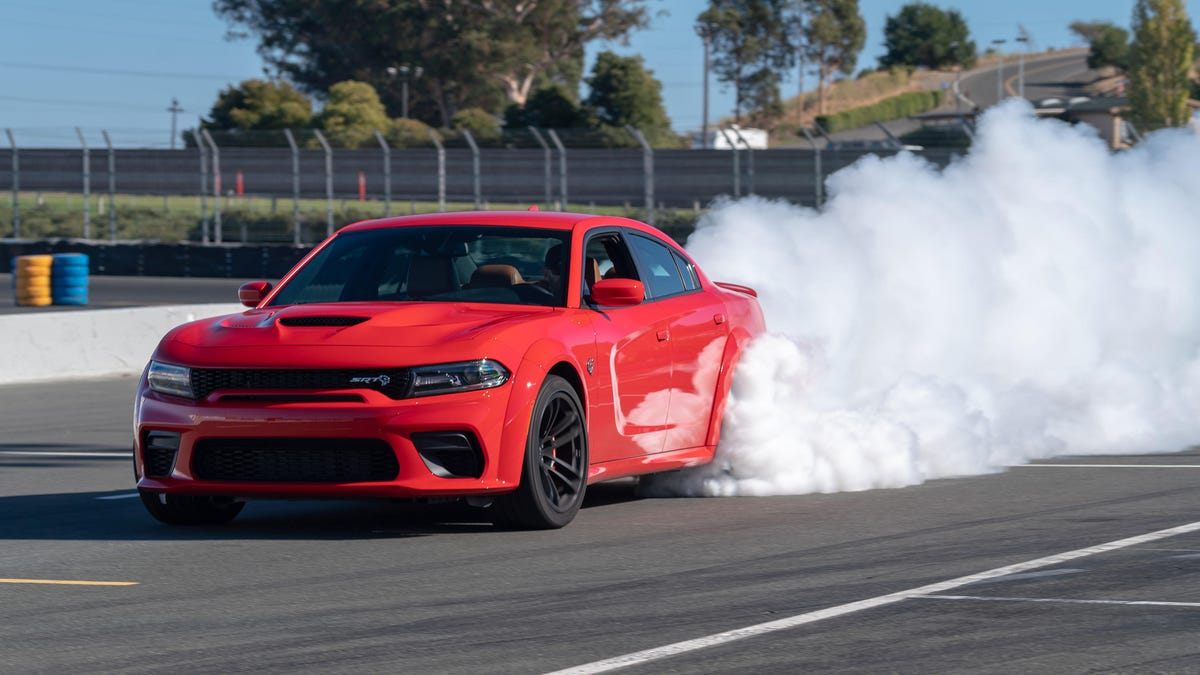2020 Dodge Charger Widebody first drive review: Horsepower that handles
With the new Widebody package, the Dodge Charger SRT Hellcat and Scat Pack get a big handling upgrade.
If you're looking for supercharged V8 horsepower but only have turbocharged I4 dollars, Dodge has you covered. With its Hellcat-powered cars, the company offers power numbers that, in any other timeline, would cost tens of thousands of dollars more. Right now, you can buy a 707-horsepower Dodge Challenger for just over $60,000. Good golly.
However, with great power comes limited handling. The Dodge Charger and Challenger aren't exactly known for their corner-carving capabilities, but Dodge is attempting to rectify that with new Widebody packages. The Challenger got this update for the 2019 model year, and for 2020, it's now available on the Charger.
On the Charger SRT Hellcat, the Widebody package adds 3.5 inches of width to the car. The wider track means the Charger can accommodate meaty 305/35-section Pirelli P-Zero tires, wrapped around 20-inch wheels. New deep-dish "Warp Speed" style wheels are available, as are the classic "Brass Monkey" ones that I love.
The Charger isn't just wider, though. Stiffer front springs, upgraded sway bars and retuned suspension geometry make the Charger a bit better poised for cornering than before, while a revised electronic power steering setup gives drivers different weight settings, called Street, Sport and Track. Speaking of track, a few performance goodies carry over from 2019, including a race cooldown mode that keeps the air flowing through the engine even when it's turned off, Line Lock for big burnouts and launch control to make the most of the Hellcat's 3.6-second 0-to-60-mph time.
The 6.2-liter, supercharged V8 in the Dodge Charger SRT Hellcat puts out 707 horsepower and 650 pound-feet of torque, directed to the rear wheels only. That's a lot to handle, especially at my stomping grounds for the day: Sonoma Raceway, with its many off-camber turns, blind crests and quick-entry corners.
I put the Charger in Track mode in order to get the best throttle response, heaviest steering and stiffest suspension tuning. I opt to leave the paddle shifters alone, instead letting the eight-speed automatic transmission do its own thing, downshifting under braking and holding gears exactly as I would.
The Charger winds through a 55-mph slalom with ease, changing direction quickly with only small steering inputs. In the long sweepers, I have to be patient, waiting to fully unwind the steering wheel before going hard on the throttle. When I do, the Charger leaps forward, pushing well into triple-digit speeds before I stomp on the brakes. The 15.4-inch front Brembos have a nice bite, but are easy to modulate, trailbraking into the apex of the corner. The rear end wiggles a little as it lightens up in corner entry, but with the traction control in its standard Street setting, everything is cool and under control.
The takeaway here is that the Charger is still a big brute, and not a sharp sports car. But with the added grip from the fat P-Zero tires, and slightly stiffer suspension, it doesn't feel quite so unruly.
Of course, if 707 horsepower feels like too much (it kind of is), Dodge also offers the Widebody treatment on the Charger Scat Pack. It gets the same wheel/tire setup as the Hellcat, along with the stiffer front springs and suspension tuning. Only the rear sway bar is upgraded on the Scat Pack, however, and its naturally aspirated, 6.4-liter V8 puts out a still-plentiful-but-much-more-manageable 485 horsepower and 475 pound-feet.
The Scat Pack is my jam. I feel like I can actually exploit all the power, getting my foot to the floor on each lap. Sure, my speed isn't as high on the straightaways, but I'm still going plenty fast. The Scat Pack is 0.7 seconds slower to 60 mph than the 707-hp Hellcat, and almost 1.5 seconds slower in the quarter-mile run, but there's more to life than just straight-line speed. Whereas in the Hellcat I merely feel like I'm along for the thrill ride, the Scat Pack actually makes me feel like I'm in control.
The Dodge Charger Scat Pack looks like the Hellcat but with less power under the hood it's a bit more frisky.
The Widebody treatment doesn't really bring any changes to other parts of the Charger, unfortunately -- the interior is largely the same. There are a few new badges, and new interior colors. But by and large, the Charger boasts the same cushy interior it's always had. It's pretty outdated at this point, but the supportive seats, beefy steering wheel and the large dials and buttons feel appropriate in a big, bad muscle sedan like this.
Both the Scat Pack and Hellcat get Dodge's Uconnect infotainment system running on an 8.4-inch touchscreen. Navigation is optional, but Apple CarPlay and Android Auto are both standard, so drivers don't really need to spend the money on the embedded tech. Driver-assistance features are a little thin on big muscle cars, but there are few tech nuggets here and there. The Scat Pack has optional adaptive cruise control, blind-spot monitoring, forward collision warning and lane-departure warning and assist. The Hellcat has blind-spot monitoring standard but the other features aren't offered at all.
Regardless of your poison, there is no arguing the value of this powerful sedan. The 2020 Dodge Charger SRT Hellcat with the standard Widebody package starts at $69,645, excluding $1,495 for delivery. The Scat Pack is seriously inexpensive at $39,995, with the Widebody package adding $6,000 on top of that. For those who want a bit of nostalgia, the Daytona 50th Anniversary Edition is available on the Hellcat with 717 horsepower in a limited run of just 501 units. Expect to see the 2020 Dodge Charger, in all its trims, at dealerships early next year.


